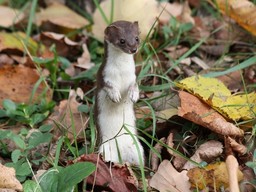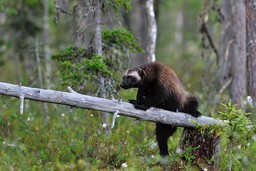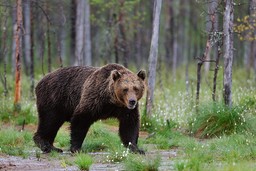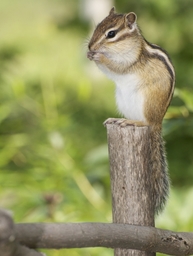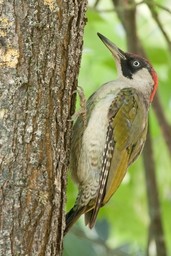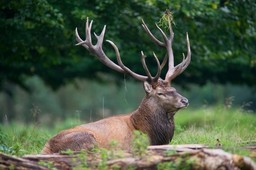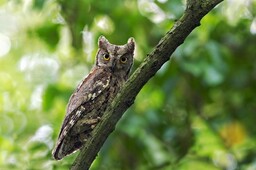11. Birds and mammals
Animals of the tundra
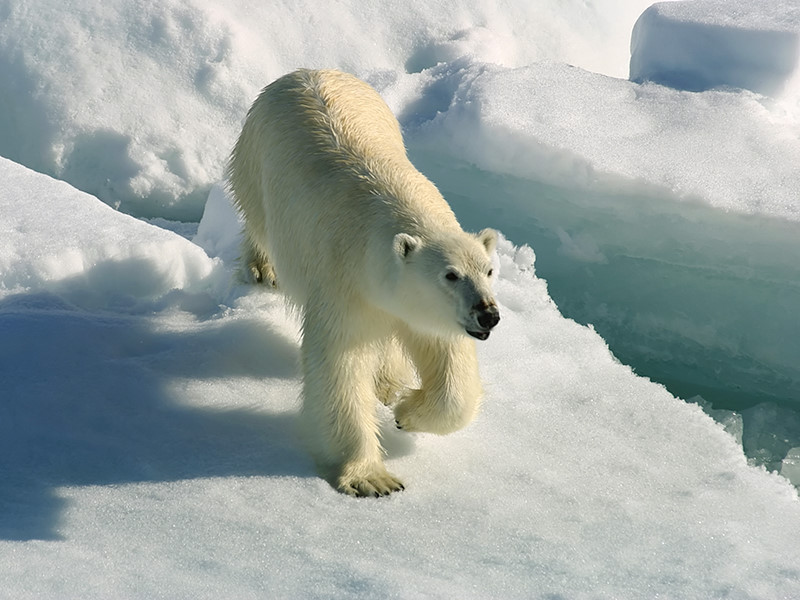 The animals of the tundra have adapted to the cold, harsh climatic conditions of the frigid zone. They need to be able to survive in cold temperatures and strong winds.
The animals of the tundra have adapted to the cold, harsh climatic conditions of the frigid zone. They need to be able to survive in cold temperatures and strong winds.No cold-blooded vertebrates, such as reptiles or amphibians, can live on the tundra. However, during the summer months, there can be large insect populations.
The polar bear (pictured on the right) inhabits the shore regions of the Arctic Ocean. In Europe, it can be seen in the Spitsbergen region or in the northern coasts of Russia.
The polar bear is a predator. It eats fish, seals and birds.
The polar bear has adapted to life in the frigid zone with its thick, white fur and the dense layer of fat beneath its skin. It is also an excellent swimmer.
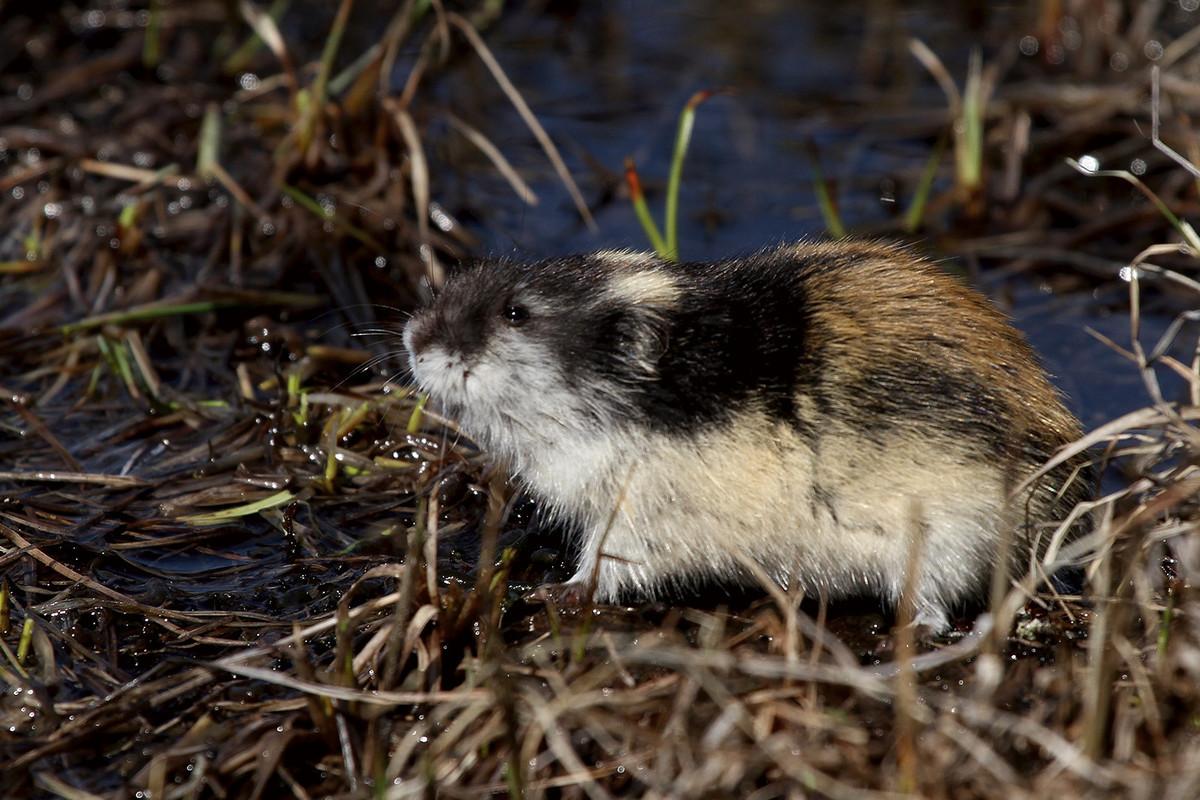 Nowadays, the polar bear is facing extinction as a result of climate change. As the global temperatures grow warmer, the Arctic glacier shrinks, and the polar bear's habitat is slowly destroyed.
Nowadays, the polar bear is facing extinction as a result of climate change. As the global temperatures grow warmer, the Arctic glacier shrinks, and the polar bear's habitat is slowly destroyed.The Norway lemming (pictured on the right) is a rodent that inhabits the European tundra. Its thick fur protects it from the cold climate. It spends the harsh, long winter inside its nest.
The rock ptarmigan (pictured below) is a bird that can only be found in the European tundra. During the winter, it changes its feathers into a white winter plumage. By doing so, it can move in the snowy terrain hidden from predators.
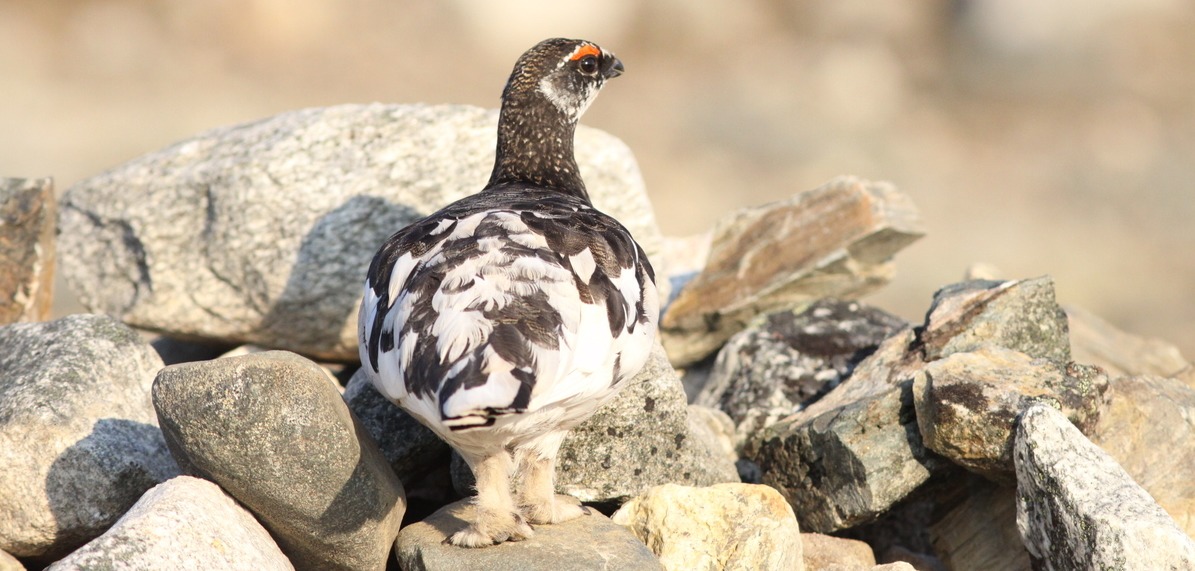
Animals of the coniferous forest
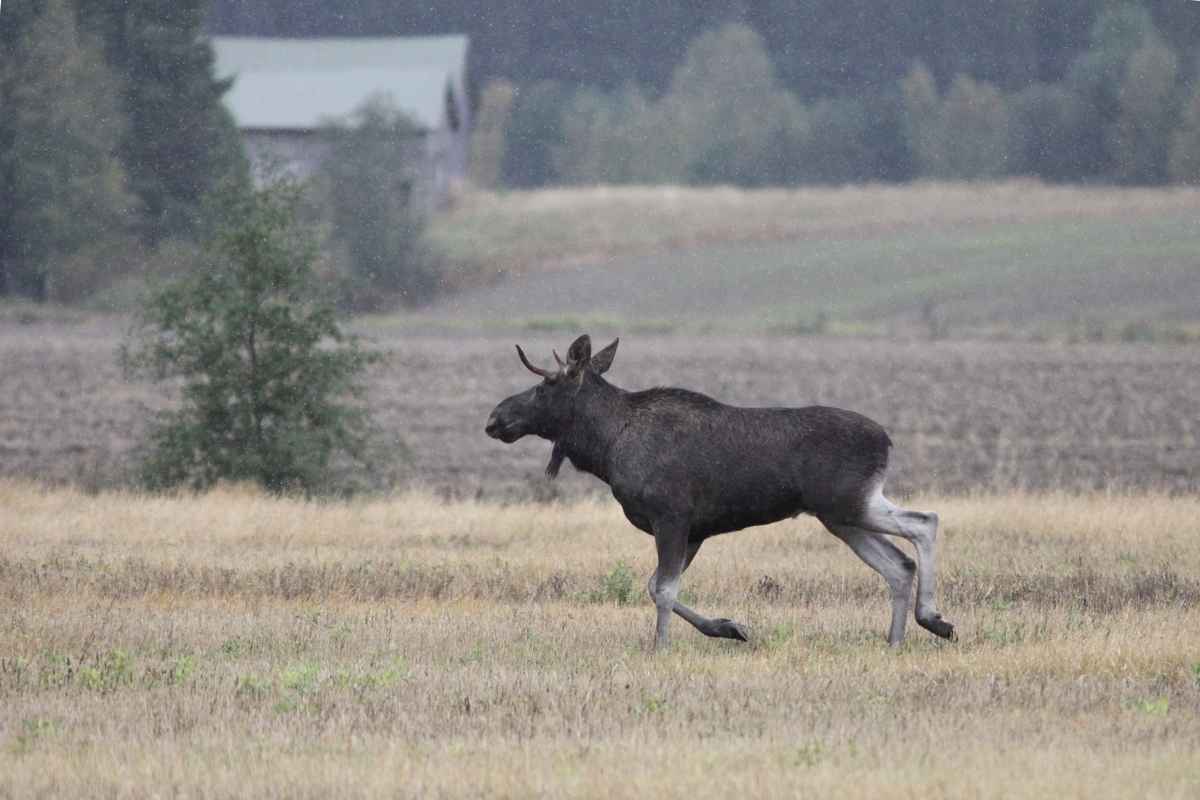 The coniferous forests of Northern Europe are the home of many large mammal species. The moose (pictured on the right) is one of the most well-known of these species. It is a large mammal that has adapted to the cold, snowy winters of the temperate zone. During the winter the moose mainly eats tree branches, whereas during the summer it eats tree leaves. The moose has long, strong feet that are helpful when moving through snowy forests and wet bogs.
The coniferous forests of Northern Europe are the home of many large mammal species. The moose (pictured on the right) is one of the most well-known of these species. It is a large mammal that has adapted to the cold, snowy winters of the temperate zone. During the winter the moose mainly eats tree branches, whereas during the summer it eats tree leaves. The moose has long, strong feet that are helpful when moving through snowy forests and wet bogs. The wolverine and the bear are the best-known predators inhabiting the northern coniferous forests. They mainly eat other animals, but they can also eat other kinds of food, such as berries. By doing so, they have adapted to the difficult conditions of the coniferous forests.
Owls are predator birds that can be found in the coniferous forests of Northern Europe. They are well adapted to living in dark forests, as they have a good eyesight and hearing. Many different owl species can be found in Northern Europe.
Gallery: Animals of the coniferous forest
Animals of the broadleaf forest
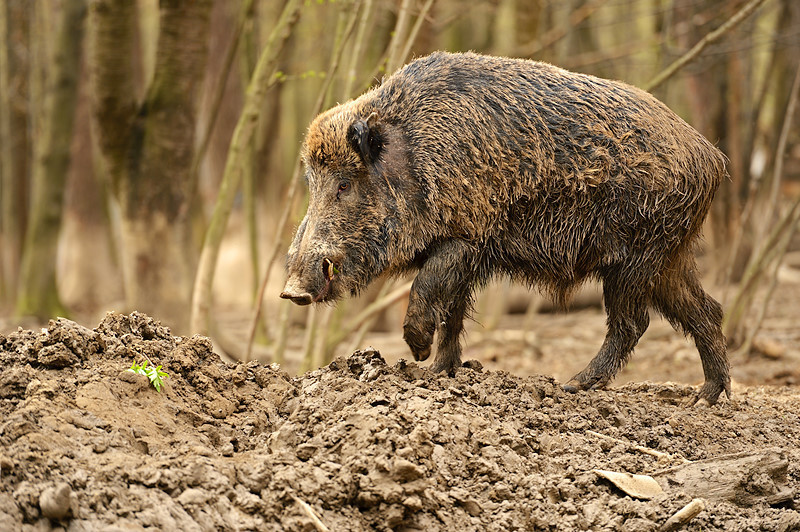 The broadleaf forests of Central and Western Europe are inhabited by a large variety of animal species. During the summer, the foliage of the trees provides a sheltered and dark habitat for many kinds of mammals, such as deer and mice.
The broadleaf forests of Central and Western Europe are inhabited by a large variety of animal species. During the summer, the foliage of the trees provides a sheltered and dark habitat for many kinds of mammals, such as deer and mice. The wild boar is a typical mammal of the European broadleaf forest zone. Wild boars move in the dark forests in small herds. They find food by digging the ground. The wild boar is an omnivorous animal. It eats insects, worms and plant parts.
The European broadleaf forests also accommodate a large variety of bird species, such as tits, thrushes, jays and woodpeckers.
Gallery: Animals of the broadleaf forest
Animals of the grassland
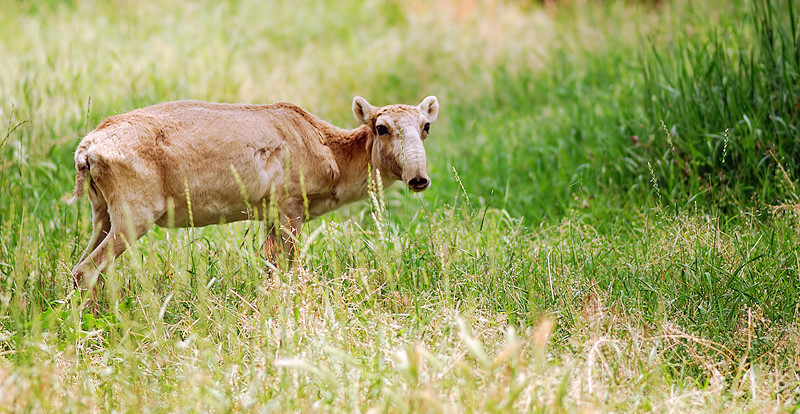
The treeless vegetation and cold winters of the grasslands and steppes of Eastern Europe are not suitable for animals. Only some mammal species, such as the marmot, have adapted to life in the grassland.
Most of the birds that inhabit the steppes of Eastern Europe are migratory birds.
The saiga antelope is a resilient mammal. It can travel for long distances in search of food.
Most of the birds that inhabit the steppes of Eastern Europe are migratory birds.
The saiga antelope is a resilient mammal. It can travel for long distances in search of food.
Animals of the Mediterranean region
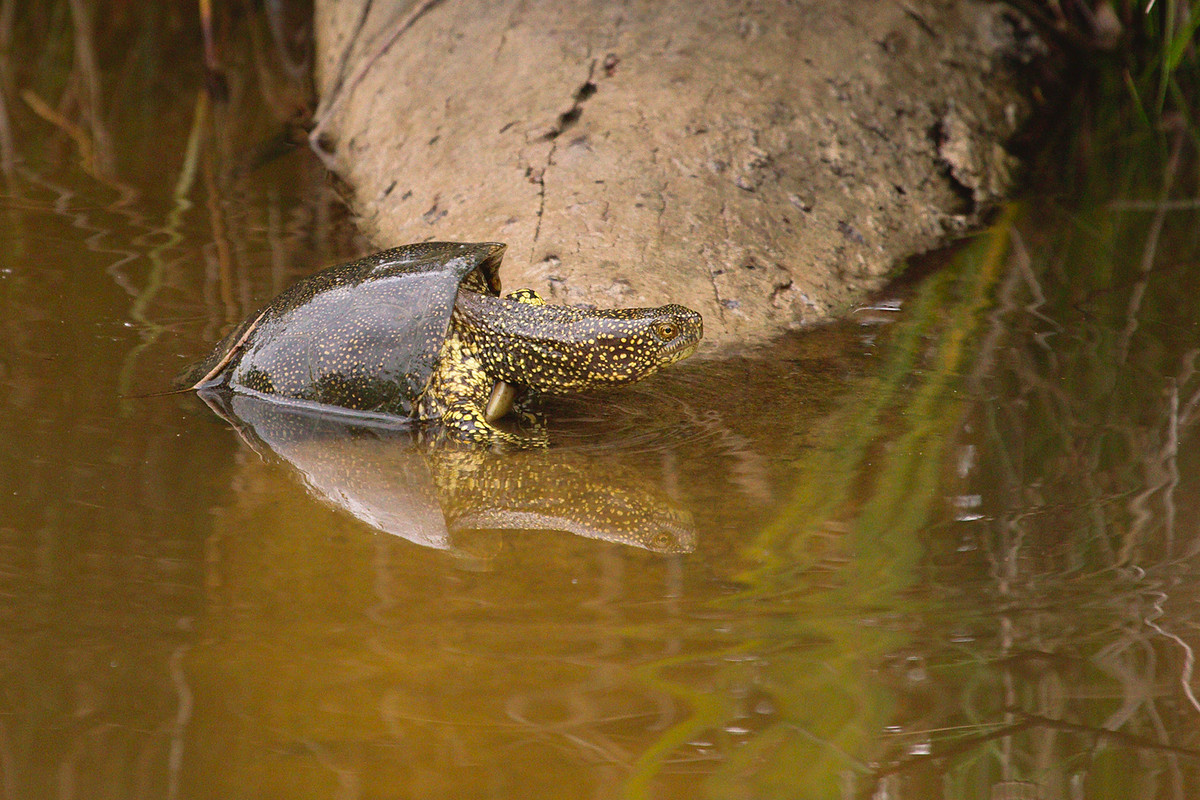 The Mediterranean region cannot accommodate large mammal species. This is because the area lacks forests. Most Mediterranean forests were cut down thousands of years ago.
The Mediterranean region cannot accommodate large mammal species. This is because the area lacks forests. Most Mediterranean forests were cut down thousands of years ago. However, the climate and vegetation of the Mediterranean region is very suitable for reptiles. Many kinds of snakes can be found in the region.
The shrub-like vegetation also accommodates many kinds of small birds.
Chameleon lizards and turtles can also be found in the islands of the Mediterranean. The rocks of Gibraltar are home to the only European monkey species, the Barbary macaque.
Gallery: Animals of the Mediterranean region
Terminology
| Term | Explanation |
|---|---|
| cold-blooded | An animal that has no stable body tempearature. |
| omnivorous | An animal that can eat both plants and animals. |
